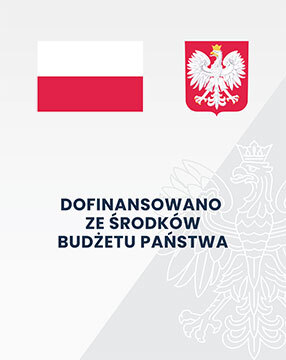Digitalizacja i zmieniające się role bibliotek we wspieraniu badań z zakresu humanistyki na przykładzie kolekcji Harrisona Formana
Krystyna K. Matusiak
Afiliacja: Morgridge College of Education University of Denver, Stany Zjednoczone
Abstrakt
Teza/Cel – Artykuł zawiera analizę roli bibliotek w poszerzaniu dostępu do źródeł pierwotnych poprzez digitalizację, a także w zapewnianiu wsparcia dla badań z zakresu humanistyki. Metoda badań – Autor analizuje literaturę na temat zachowań informacyjnych badaczy w dziedzinach humanistycznych w aspekcie zwiększonego wykorzystania zdigitalizowanych źródeł pierwotnych. Na przykładzie zdigitalizowanych fotografii i pamiętników z Kolekcji Harrisona Formana zwraca również uwagę na zwiększającą się rolę bibliotek w tworzeniu nowego źródła materiałów naukowych oraz wspieraniu przez nie badań w zakresie humanistyki. Wyniki i wnioski – Digitalizacja staje się coraz ważniejsza nie tylko z uwagi na łatwość użycia i dostępu do dokumentów, lecz także poprzez oferowanie nowych możliwości badaczom w dziedzinach humanistycznych. Projekty digitalizacyjne zapewniają rozbudowaną kontrolę intelektualną źródeł pierwotnych, możliwość odkrywania ukrytych kolekcji i gromadzenia materiałów rozproszonych. W swym obecnym kształcie kolekcje cyfrowe wykazują pewne niedomogi, jeśli chodzi o wspieranie naukowców w poszukiwaniach i zapewnianie informacji kontekstowej. Tworzenie kolekcji cyfrowych służących wspieraniu badań humanistycznych wymaga transformacji ról bibliotek i współpracy z badaczami w zakresie humanistyki cyfrowej.
Słowa kluczowe
Digitalizacja; Źródła pierwotne; Zasoby dziedzictwa kulturowego; Kolekcje cyfrowe; Kolekcje tematyczne; Fotografia historyczna; Humanistyka cyfrowa
Bibliografia
Besser, Howard (2004). The past, present, and future of digital libraries. In: Susan Schreibman, Ray Siemens, John Unsworth (Eds.), A companion to digital humanities (pp. 557-575). Malden: Blackwell Publishing.
Borgman, Christine L. (2007). Scholarship in the digital age: Information, Infrastructure and the Internet. Cambridge: The MIT Press.
Brockman, William S.; Neumann, Laura; Palmer, Carole L.; Tidline, Tonyia J. (2001). Scholarly work in the humanities and the evolving information environment. Washington, DC: Council on Library and Information Resources.
Cohen, Daniel J.; Rosenzweig, Roy (2006). Digital history: A guide to gathering, preserving, and presenting the past on the web. Philadelphia: University of Pennsylvania Press. [accessed on: 15.01.2016]. Available on WWW: <http://chnm.gmu.edu/digitalhistory/>.
Conway, Paul. (2000). Overview: rationale for digitization and preservation. In: Maxine K. Sitts (Ed.), Handbook for digital projects: A management tool for preservation and access (pp. 5-20). Andover, MA: Northeast Document Conservation Center.
Conway, Paul (2010). Preservation in the age of Google: Digitization, digital preservation, and dilemmas. "Library Quarterly", 80 (1), pp. 61-79.
Daigle, Bradley J. (2012). The digital transformation of special collections. "Journal of Library Administration", 52(3/4), pp. 244-264.
Dalbello, Marija (2004). Institutional shaping of cultural memory: Digital library as environment for textual transmission. "Library Quarterly", 74 (3), pp. 265-298.
Dalbello, Marija (2011). A genealogy of digital humanities. "Journal of Documentation", 67 (3), pp. 480-506.
Deegan, Marilyn; Tanner, Simon. (2004). Conversion of primary sources. In: Susan Schreibman, Ray Siemens, John Unsworth (Eds.), A companion to digital humanities (pp. 488-504) Malden: Blackwell Publishing.
Diekema, Anne R. (2012). Multilinguality in the digital library. A review. "Electronic Library", 30 (2), pp. 165-181.
Downie, J. S. (2014). Scholar-built collections: A study of user requirements for research in large-scale digital libraries. "Proceedings of the American Society for Information Science and Technology", 51 (1), pp. 1-10.
Earhart, Amy E. (2015). The digital humanities as a laboratory. In Patrik Svensson and David Theo Goldberg (Eds.), Between humanities and the digital (pp. 391-400). Cambridge, MA: MIT Press.
Fenlon, Katrina; Senseney, Megan; Green, Harriett; Bhattacharyya, Sayan; Willis, Craig; Forman, Harrison (1939). Harrison Forman Diary, Poland, August-September 1939. The Forman Papers: Travel Diaries and Scrapbooks of Harrison Forman 1932-1973. University of Wisconsin-Milwaukee Libraries, 2011. <http://collections.lib.uwm.edu/cdm/ref/collection/forman/id/9>.
Katz, Stanley N. (2005). Why technology matters: The humanities in the twenty-first century. "Interdisciplinary Science Reviews", 30 (2), pp. 105-118.
Kenney, Anne R.; Rieger, Oya. Y. (2000). Introduction. In Anne R. Kenney and Oya R. Rieger (Eds.), Moving theory into practice: digital imaging for libraries and archives (pp. 1-10). Mountain View: Research Libraries Group.
Matusiak, Krystyna K.; Johnston, Tamara K. (2014). Digitization for preservation and access: Restoring the usefulness of the nitrate negative collections at the American Geographical Society Library. "The American Archivist", 77 (1), pp. 241-269.
Matusiak, Krystyna K.; Meng, Ling; Barczyk, Ewa; Shih, Chia-Jung (2015). Multilingual metadata for cultural heritage materials: The Case of the Tse-Tsung Chow Collection of Chinese scrolls and fan paintings. "The Electronic Library", 33 (1), pp. 136-151.
Maxwell, Alexander (2010). Digital archives and history research: Feedback from an end-user. "Library Review", 59 (1), pp. 24-39.
Palmer, Carole L. (2004). Thematic digital collections. In: Susan Schreibman, Ray Siemens, John Unsworth (Eds.), A Companion to digital humanities, pp. 348-365. Malden: Blackwell Publishing.
Palmer, Carole L. (2005). Scholarly work and the shaping of digital access. "Journal of the American Society for Information Science & Technology", 56 (11), pp. 1140-1153.
Rhee, Lim Hea. (2012). Modelling historians’ information-seeking behaviour with an interdisciplinary and comparative approach. Information Research, 17 (4). [online], [accessed on: 29.01.2016]. Available on WWW: <http://www.informationr.net/ir/17-4/paper544.html#.VrVQZvkrLcs>.
Rimmer, Jon; Warwick, Claire; Blandford, Ann; Gow, Jeremy; Buchanan. George (2008). An examination of the physical and the digital qualities of humanities research. "Information Processing & Management", 44 (3), pp. 1374-1392.
Rutner, Jennifer; Schonfeld, Roger C. (2012). Supporting the changing research practices of historians. Final Report from ITHAKA S+ R. [accessed on: 15.01.2016]. Available on WWW: <http://www.sr.ithaka.org/wp-content/mig/reports/supporting-the-changing-research-practices-of-historians.pdf>.
Schreibman, Susan; Siemens, Ray; Unsworth, John (2004). The digital humanities computing: An introduction. In: Susan Schreibman, Ray Siemens, John Unsworth (Eds.), A companion to digital humanities (pp. xxiii-xxvii). Malden: Blackwell Publishing.
Sexton, Anna; Turner, Chris; Yeo, Geoffrey; Hockey, Susan (2004). Understanding users: a prerequisite for developing new technologies. "Journal of the Society of Archivists", 25 (1), pp. 33-49.
Sinn, Donghee; Soares, Nicholas 2014). Historians’ use of digital archival collections: The web, historical scholarship, and archival research. "Journal of the Association for Information Science and Technology", 65 (9), pp. 1794-1809.
Smith, Abby (1999). Why digitize? Washington, DC: Council on Library and Information Resources. [accessed on: 15.01.2016]. Available on WWW: .
Sula, Chris (2013). Digital humanities and libraries: A conceptual model. "Journal of Library Administration", 53 (1), pp. 10-26.
Tibbo, Helen R. (1994). Indexing for the humanities. "Journal of the American Society for Information Science", 45 (8), pp. 607-619.
Turner, James M. (2010). From ABC to Http: The effervescent evolution of indexing for audiovisual materials. "Cataloging & Classification Quarterly", (48) 1, pp. 83-93.
Vandegrift, Micah; Varner, Stewart (2013). Evolving in common: Creating mutually supportive relationships between libraries and the digital humanities. "Journal of Library Administration", 53 (1), pp. 67-78.
Zhang, Ying; Liu, Shu; Mathews, Emilee (2015). Convergence of digital humanities and digital libraries. "Library Management", 36 (4/5), pp. 362-377.
Afiliacja: Morgridge College of Education University of Denver, Stany Zjednoczone
Biogram:
Krystyna K. Matusiak is an Assistant Professor in the Library and Information Science Program (LIS) at the Morgridge College of Education of the University of Denver. She received a Master’s degree in Theater Studies from the Jagiellonian University and a Master’s in Library and Information Science from the University of Wisconsin-Milwaukee. She earned her PhD from the University of Wisconsin-Milwaukee. Prior to accepting her position at the University of Denver, she worked as a Digital Collections Librarian and was involved in establishing a digitization program at the University of Wisconsin-Milwaukee. Her research and teaching interests focus on the digitization of cultural heritage materials, digital libraries, the indexing and retrieval of digital images, and user studies. Her book, Digital Libraries: Theory and Practice, co-authored with Iris Xie, will be published by Elsevier in summer 2016.
Autor składa oświadczenie o oryginalności przesłanego tekstu, a w umowie wydawniczej przenosi na rzecz Wydawcy nieodpłatnie majątkowe prawa autorskie w zakresie jednorazowego opublikowania dzieła.
CC BY-NC-ND 4.0 Uznanie autorstwa - Użycie niekomercyjne - Bez utworów zależnych 4.0 Międzynarodowe




